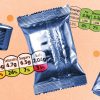
AsianScientist (May. 16, 2025) – Poor diets are a leading driver of noncommunicable diseases such as heart disease, diabetes, cancer, and respiratory illnesses, which account for 71% of deaths worldwide. One way to encourage healthier eating is by making nutritional information of packaged foods available at the point of purchase. While most food packaging includes Nutrition Facts Panels (NFP), consumers often find them difficult to understand. So, many countries have adopted front-of-pack (FOP) and shelf labelling systems that are designed to offer simplified, at-a-glance cues about a product’s nutritional quality. These efforts, however, have only led to small improvements in food choices.
Looking for better solutions, scientists at Duke-NUS Medical School at the National University in Singapore turned to online grocery stores, which have become increasingly popular. Researchers used social media ads to recruit 328 participants in Singapore who were typically the primary shoppers for their households, and had them randomly assigned to one of two versions of NUSmart—a fully functioning online grocery store carrying over 3000 locally available products. All volunteers were asked to place three weekly orders for home delivery. One group shopped on a standard version of the site, while the other used a digital feature where products were marked with traffic light-style labels—green for the healthiest, amber for moderate, and red with an “X” for foods to avoid, based on a nutritional scoring system. The study was published in American Journal of Preventive Medicine study, the Duke-NUS team found that combining these tools led to noticeably stronger results.
In the intervention store, healthier options also appeared higher in search results. As participants filled their carts, they received real-time feedback through a pie chart showing the nutritional breakdown of their selections, alongside an ideal reference cart for comparison. Moreover, shoppers could also swap items with one of four healthier alternatives displayed on the product page and at checkout with a single click.
Participants with access to these tools chose groceries that were 4.06 points higher on the nutritional scoring system, moving them up from a grade “C” to a “B” on the Nutri-Score scale used by France. This was a stronger improvement than what many similar studies have found with labels alone. The shoppers continued engaging with the tools and consistently made better choices through all three shopping experiences.
“As online grocery shopping is rapidly gaining ground, we wanted to see if we could design low-cost, scalable online tools that could be used to nudge consumers toward healthier choices at the point of purchase,” said first author Soye Shin, an assistant professor from Duke-NUS’ Health Services and Systems Research Programme. “These results show the potential of these tools to improve diet and health outcomes.”
Although the findings are encouraging, the participant group was largely made up of well-educated and digitally savvy individuals. Shin and her team now hope to include consumers from lower socio-economic backgrounds and with limited nutritional awareness to see how these tools apply to the broader population. They also plan to explore whether the positive effects of this strategy hold up over time, particularly in shaping lasting changes in shopping habits and consumer health.
—
Source: Duke-NUS Medical School ;Image: Asian Scientist Magazine
The article can be found at A Randomized Trial Using an Online Grocery Store to Evaluate a Multicomponent Digital Intervention to Improve Diet Quality.
Disclaimer: This article does not necessarily reflect the views of AsianScientist or its staff.

